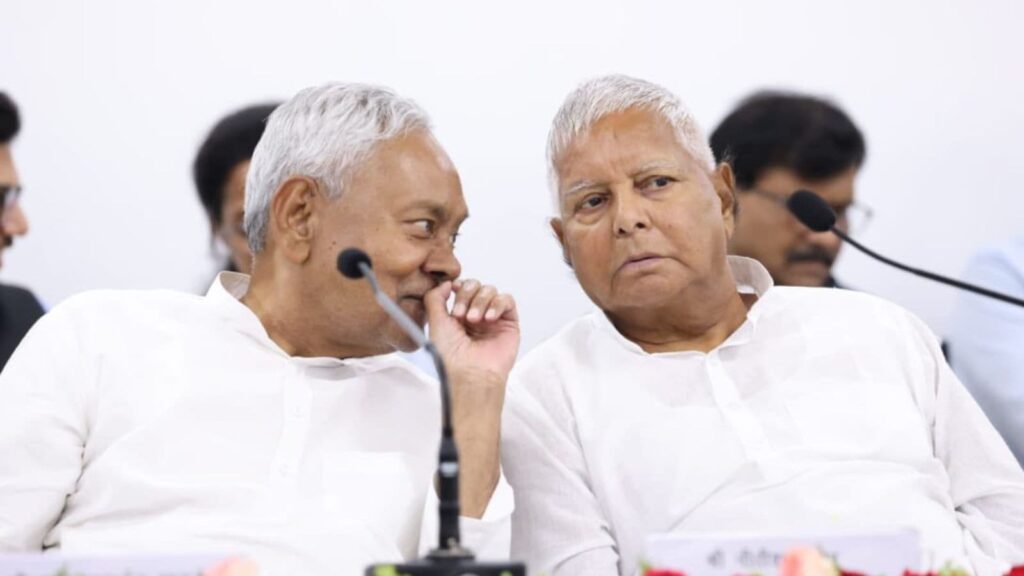The Muslim members elected to the Bihar Assembly have accounted for about 8% of the total state MLAs on an average in the last eight elections since 1990 – from the lowest 5.55% in the 1990 polls to the highest 9.87% in the 2015 and 2005 (February) elections.
The Muslim community makes up 17.7% of Bihar’s 13.07 crore population, according to the 2022-23 state caste survey.
With both the Opposition Mahagathbandhan, comprising the RJD, Congress, Left and Vikassheel Insaan Party (VIP), and the ruling NDA, led by the BJP and JD(U), fielding fewer Muslim candidates in the upcoming Assembly elections than the 2020 polls, AIMIM chief Asaduddin Owaisi, in his campaign, has been stressing on the need to develop Muslim leadership in the crucial Hindi heartland state.
In the 2020 elections to the 243-member Bihar Assembly, 19 Muslim candidates were elected as MLAs, most of whom, eight MLAs, were from the RJD, followed by the AIMIM’s five, Congress’s four, and one each from the BSP and CPI(ML) Liberation. The Muslim representation in the outgoing Assembly was thus 7.81%. While Chief Minister Nitish Kumar’s JD(U) had fielded 11 Muslim candidates, all of them lost the polls.
As compared to 2020, the Muslim representation in the Bihar House was higher, at 9.87 per cent, in 2015, when 24 MLAs from the community were elected, including 12 of the RJD, six Congress, and five of the JD(U). One remaining MLA was from the CPI(ML) Liberation.
In 2010, the Muslim representation in the Bihar Assembly was again 7.81% as 19 legislators from the minority community were elected with a maximum seven from the JD(U), six RJD, three Congress, two Lok Janshakti Party (LJP), and one from the BJP. The BJP’s lone Muslim MLA was Saba Zafar, who won from the Amour constituency in Purnea, defeating the Congress’s candidate Abdul Jalil Mastan. Mastan trounced Zafar in 2015.
In undivided Bihar’s last Assembly elections, held in February 2000, altogether 30 Muslim MLAs were elected in the 324-member House, accounting for 9.25%. Of them, a maximum 17 Muslim MLAs were elected on the RJD’s symbol, six from the Congress, two each of the Samata Party (SAP) and the CPI, and one each from the BSP and CPI(ML) Liberation. This marked the RJD’s first Assembly elections since its formation in 1997, when Lalu Prasad split the Janata Dal to form the breakaway outfit.
Story continues below this ad
Following the creation of Jharkhand state carved out of Bihar in November 2000, the elections to the 243-member Bihar Assembly was first held in February 2005, when 24 Muslim MLAs were elected accounting for 9.87% of the House strength. They included 11 of the RJD, four JD(U), 3 Congress, two NCP, one each of the CPI (ML) Liberation, BSP, Samajwadi Party, and an Independent.
Since no government could be formed in this election, President’s Rule was imposed in Bihar. When the state saw fresh polls in October-November 2005, only 16 Muslim nominees were elected, with their representation thereby dipping to 6.58%. These MLAs included four each from the RJD, Congress, JD(U), one each from the LJP, NCP and CPI(ML) Liberation, and an Independent.
In 1990, when the Janata Dal won 122 of 324 seats and Lalu Prasad became the CM for his first term, 18 Muslim candidates were elected as MLAs, including 10 from the Janata Dal, four Congress, one JMM, and three Independents. The Muslim representation in the House then stood at only 5.55 %.
This rose to 7.09 % in 1995, when 23 Muslim MLAs were elected. A maximum 13 of them were from the Janata Dal, five Congress, two SP, and one each from the CPI, Jharkhand Mukti Morcha (JMM) and JMM (Marandi).
Story continues below this ad
Nine-time CM Nitish has remained at the helm of the Bihar government since November 2005, which has alternately involved his alliances with the NDA as well as the Mahagathbandhan.
Muslim candidates in 2025 polls
For the two-phase Bihar Assembly elections to be held on November 6 and 11, the RJD has named 18 Muslims among its 143 candidates. The party had fielded 18 Muslims (out of 144 candidates) in 2020 too, of whom eight had won.
The Congress has now fielded 10 Muslims – two less than the 2020 polls, when its four Muslim nominees were elected as MLAs.
The CPI (ML) Liberation has nominated two Muslims among its 20 candidates. Of the party’s 19 candidates in 2020, three were Muslims, one of whom got elected as MLA.
Story continues below this ad
The Mukesh Sahni-led VIP, which is contesting 15 seats, has not given ticket to any Muslim this time. The party had fielded two Muslim candidates in 2020 when it had contested as an NDA ally, but both of them lost the polls.
In the upcoming elections, the JD(U) has fielded only four Muslim faces among its 101 nominees. In 2020, the JD(U) had nominated 11 Muslims, but none of them could win. The party had contested the 2015 polls in alliance with the RJD, fielding six Muslims, of whom five were elected. In 2010, the JD(U) had fielded 14 Muslims, six of whom sailed through.
The Chirag Paswan-led LJP (Ram Vilas), which got 29 seats in the NDA’s seat-sharing deal, has fielded only one Muslim candidate, Mohd Kalimuddin, from the Bahadurganj seat in Kishanganj. In 2020, when the undivided LJP had contested 135 seats on its own, it had named seven Muslims, none of whom could win.
The AIMIM has fielded 25 candidates, of whom 23 belong to the Muslim community. In 2020, the party’s 20 nominees included 15 Muslims, of whom five clinched the polls.

